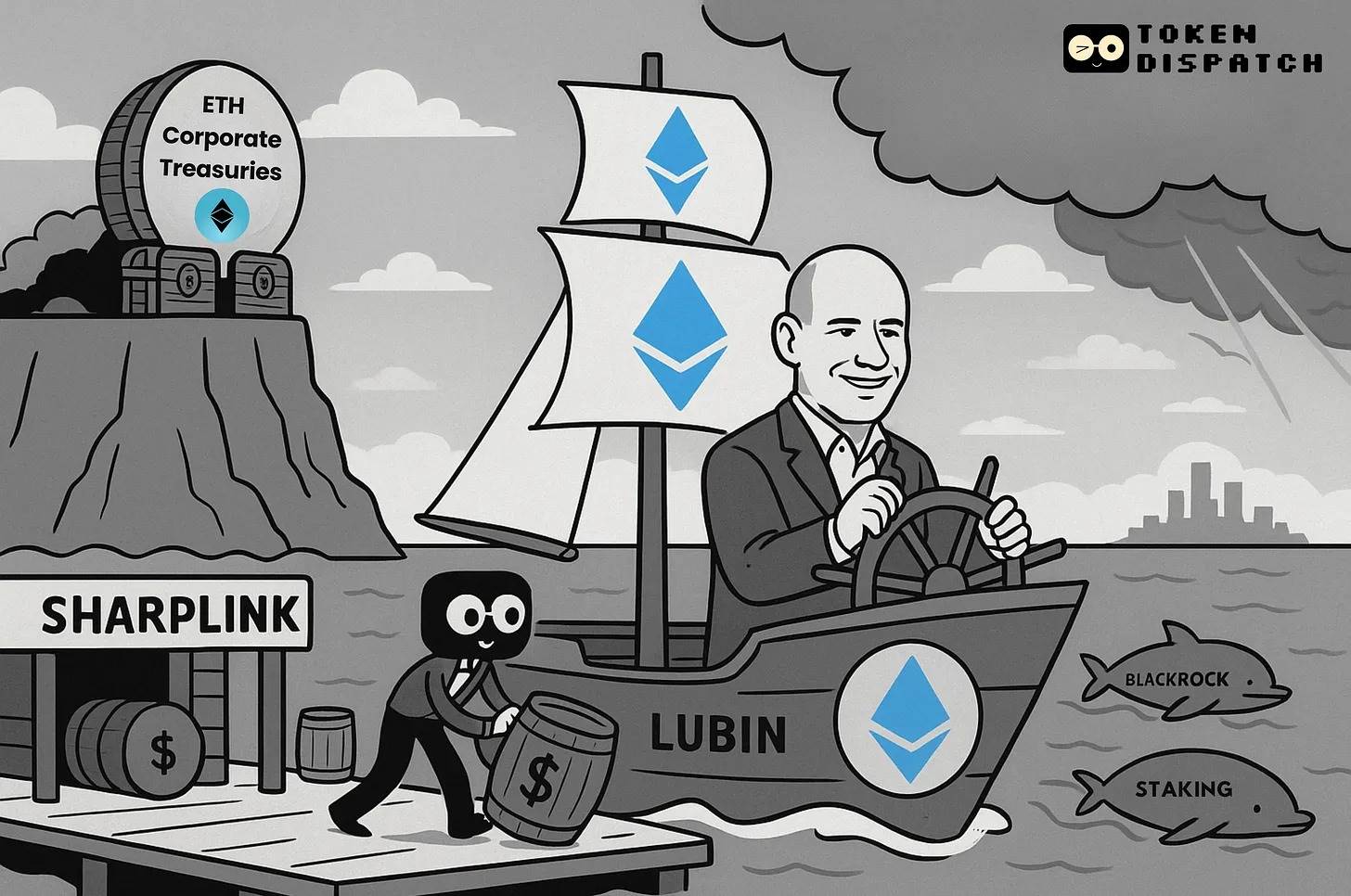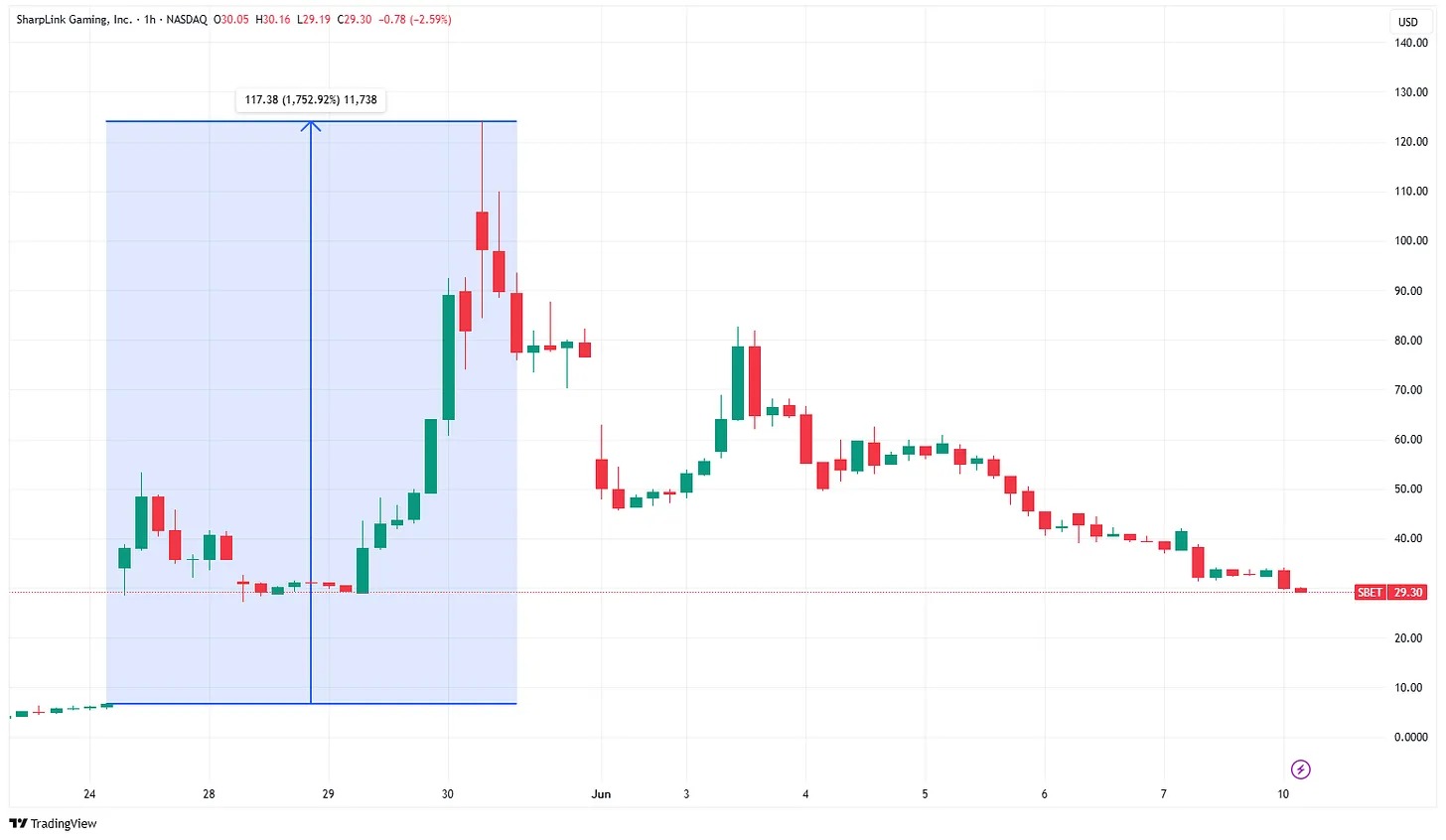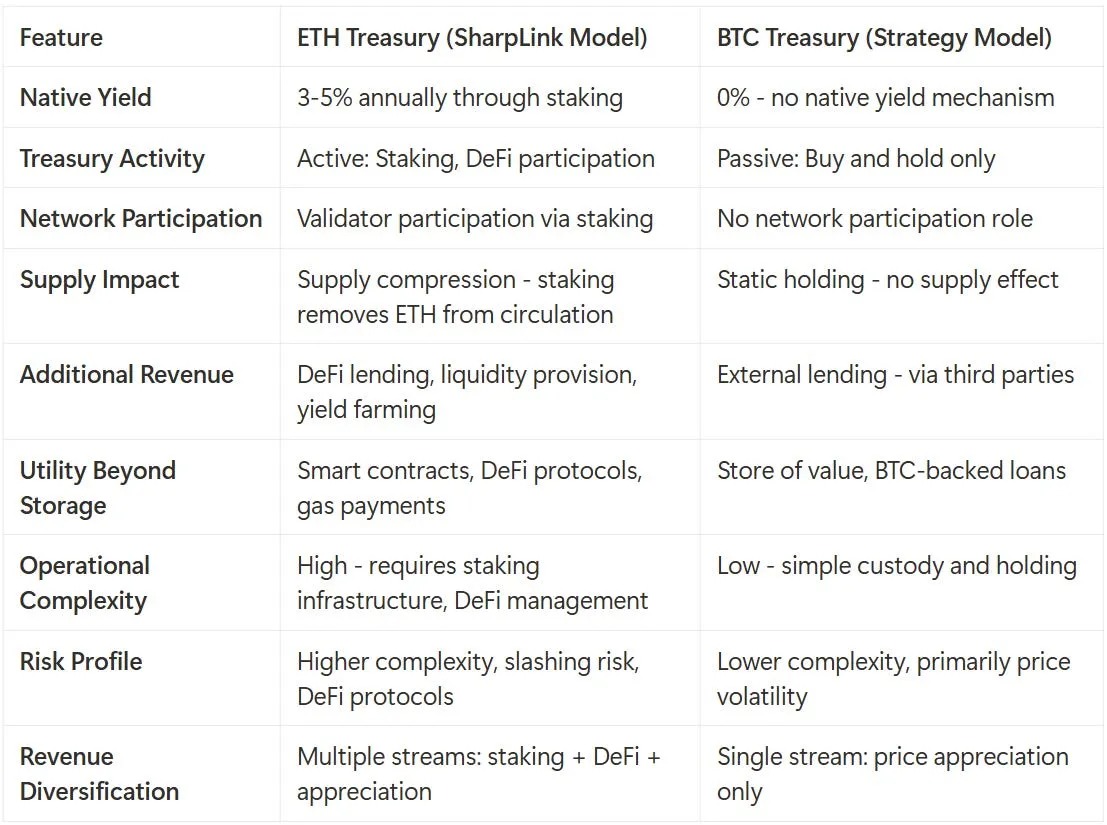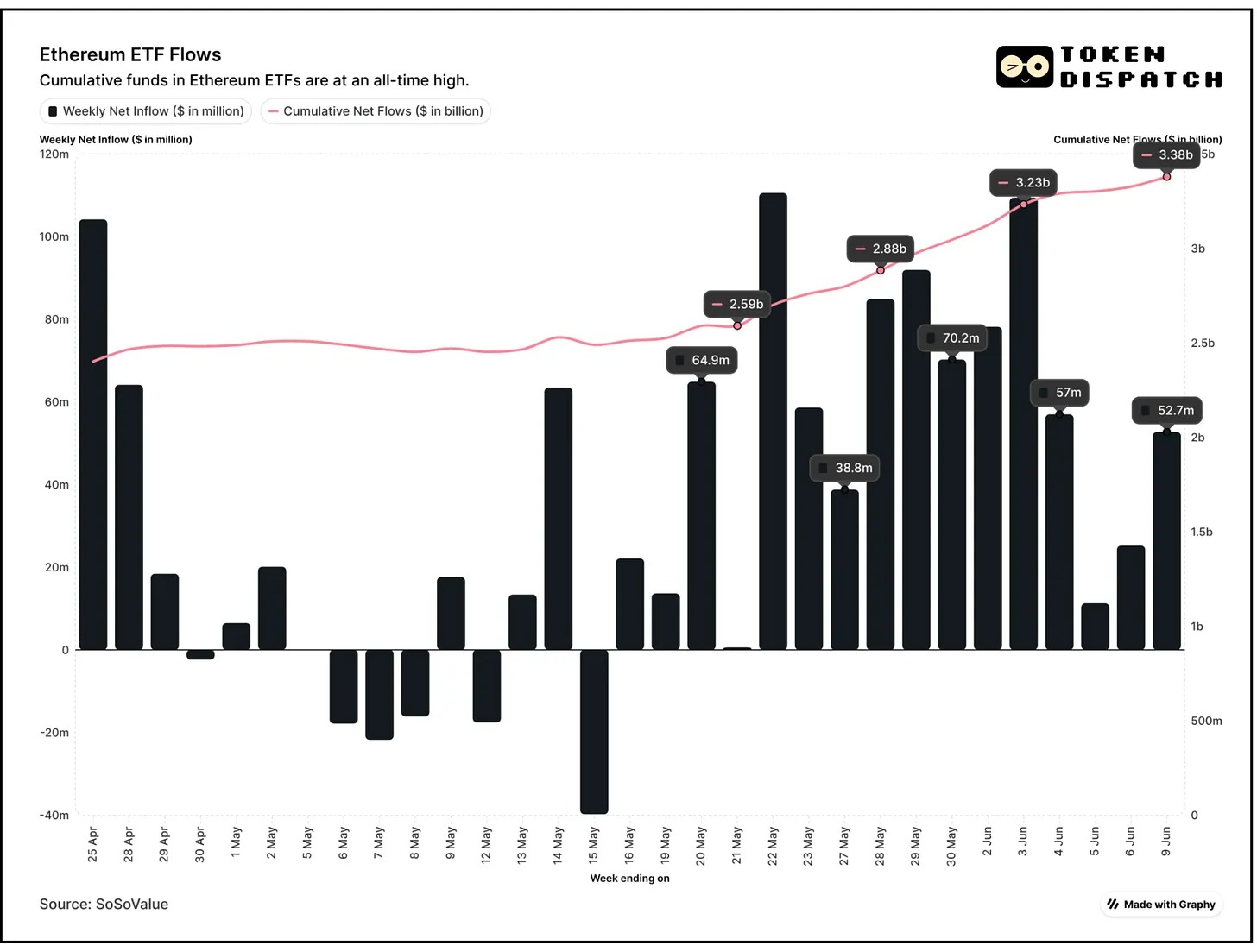Written by: Prathik Desai
Translated by: Block unicorn

Preface
Two weeks ago, Ethereum co-founder, ConsenSys founder and CEO Joe Lubin announced that he will serve as the chairman of the board for SharpLink Gaming and lead its $425 million Ethereum treasury strategy.
This move adds a new chapter to the revival of Ethereum, the world's second-largest cryptocurrency, which had been hovering below $3,000 for over four months.
This strategy is similar to the one promoted by Michael Saylor, whose financial strategy focused on Bitcoin has inspired many listed companies to participate in Bitcoin treasury construction.
In this article, we analyze whether this is one of the best opportunities for Ethereum's revival.
Ethereum Treasury
When SharpLink Gaming announced the establishment of an Ethereum treasury, the market responded quickly and decisively.
Its stock price soared by over 450% in a single day, rising from $6.63 to over $35 per share. Within five trading days, the stock price surged more than 17 times from $6.63. Even after a pullback, its trading price remained more than 3 times higher than the initial rise.

What drove this rise?
People believe Lubin can help SharpLink replicate the success Saylor achieved at Strategy (formerly MicroStrategy).
Ethereum allows Lubin to do at least one thing better than Bitcoin treasuries: building an active ETH treasury that not only stores value like Bitcoin but also creates more value.
How?
Active Treasury Theory
The difference between Bitcoin and Ethereum treasury strategies is significant. The logic of Bitcoin treasury is simple: buy Bitcoin, hold Bitcoin, enjoy price appreciation. This method is elegant and simple but essentially passive.
Ethereum's treasury strategy differs from Bitcoin's: most ETH tokens will be used for staking, creating what Ethereum core developer Eric Conner described as a "high-beta, yield-generating ETH leverage".
The staking strategy will transform corporate treasuries from static vaults to active participants in network security.
Strategy's Bitcoin holdings generate no native yield, but SharpLink's staked ETH will generate at least 2% annually while enhancing Ethereum's consensus mechanism.
Conner also mentioned the "flywheel effect" as a key advantage of ETH treasury.
Companies can raise cash below net asset value, purchase and stake ETH, and then if stock trading price is higher than the per-share ETH value, raise more cash and repeat the process. This is a classic Strategy cycle, but its extremely strong yield capability is something Bitcoin treasury cannot replicate.
The advantages go beyond basic staking.
Decentralized Finance (DeFi) protocols offer additional yield strategies through lending, liquidity provision, and complex financial instruments non-existent in the Bitcoin ecosystem. SharpLink's support from DeFi-savvy companies like ParaFi Capital and Galaxy Digital indicates their understanding of this potential.
ETH vs BTC Treasury

Ethereum's initial token offering (ICO) in 2014 raised $18 million. ETH was priced between $0.30 and $0.40 at the time, laying the foundation for the now over $320 billion Ethereum ecosystem.
SharpLink's promised $425 million is over 20 times the ICO funds, enough to acquire over 150,000 ETH at current prices. However, this still represents only 0.25% of the ETH sold during the ICO (60 million).
The 2014 ICO laid the foundation for Ethereum. The current treasury strategy may validate its maturity as an institutional asset and contribute to building financial infrastructure for the next decade.
Institutional Momentum
Besides the treasury strategy, Ethereum ETFs have continued to see fund inflows through institutional channels over the past two weeks.
As of June 9, Ethereum ETFs recorded net inflows for 16 consecutive trading days, the second-longest streak since approval in July 2024.

Over the past two weeks, inflows of $281 million and $285 million were recorded, the best two weeks in four months for Ethereum ETFs.
The world's largest asset management company, BlackRock, accumulated over $500 million worth of ETH in 11 trading days. Its ETHA ETF now manages nearly $4 billion in assets.
Bernstein analysts noted in a recent study: "ETH ETF inflows reached $815 million in the past 20 days, with annual net inflows turning positive at $658 million."
CoinShares stated that seven consecutive weeks of $1.5 billion in ETF inflows signify a "significant recovery in investor sentiment".
Ethereum-based products now account for 10.5% of total crypto ETP assets under management.
"The narrative around value accumulation in public blockchain networks is at a critical turning point," which is "beginning to reflect in investor interest in ETH ETF inflows," Bernstein said.
Our Perspective
Lubin's move at SharpLink not only brings direct financial impact but also marks the evolution of Ethereum from a speculative technology to an important financial infrastructure.
When payment giants like Visa and Mastercard develop stablecoin strategies, when Coinbase builds merchant payment systems, when Robinhood plans to launch tokenized assets—they are essentially betting on Ethereum's trajectory.
This might be the "critical turning point" Bernstein mentioned, the moment of transformation for blockchain networks.
The timing seems well-considered.
With stablecoin legislation progressing in Congress and regulatory clarity emerging, institutional investors finally have the framework to confidently allocate resources. Circle's successful IPO this week, closing 160% above its listing price, shows Wall Street's enthusiasm for crypto infrastructure investments.
For Ethereum, the convergence of corporate treasury adoption, institutional ETF inflows, and regulatory clarity creates conditions non-existent in previous cycles.
If SharpLink's experiment succeeds, it could trigger a "domino effect" of corporate adoption, just as Saylor's Strategy did for Bitcoin. Considering Bitcoin's similar risk model has been proven manageable, Ethereum's adoption might be faster and larger in scale.
Beyond corporate adoption, if BlackRock continues to accumulate and regulatory clarity solidifies as expected, Lubin's move might be remembered as the first step towards Ethereum's institutional chapter.







